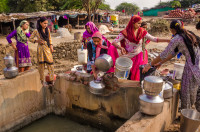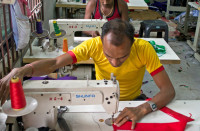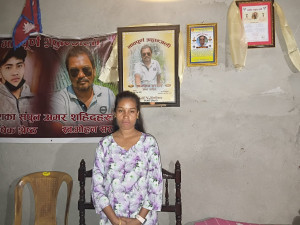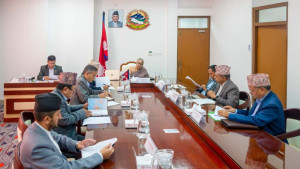Opinion
A story called bikas
Nepal’s narratives on development should encompass much more than just economic growth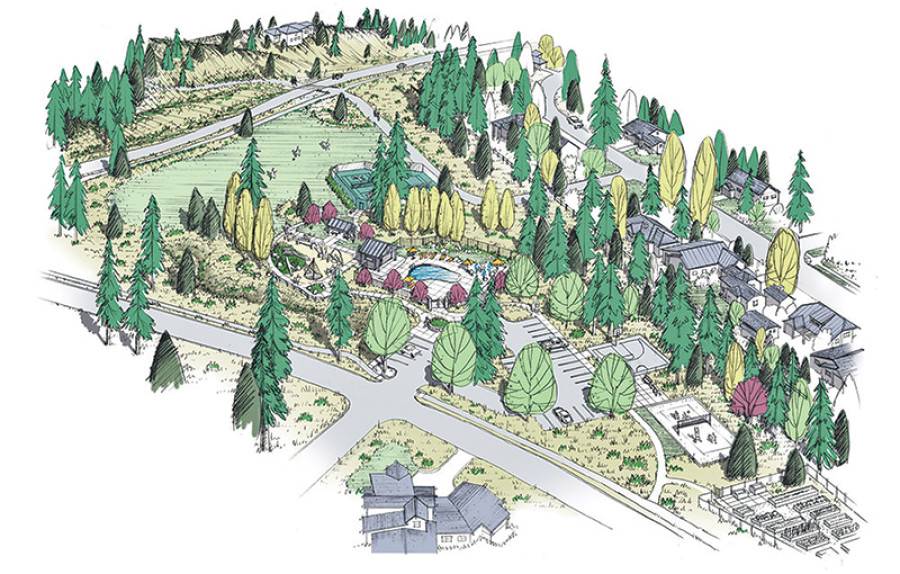
Amish Raj Mulmi
There’s an international airport coming up in Nijgadh that will see more than 2.4 million trees being cut down, and maybe another in Pokhara. There’s the railway line from Kerung to Kathmandu, and a fast-track road project that cuts through Khokana. There may be a Raxaul-Kathmandu railway link too, along with an East-West railway project, perhaps a Pokhara-Lumbini-Kathmandu rail link as well, and a Kathmandu monorail. There’s Arun 3, West Seti and others too.
Despite the many pronouncements towards these projects, the budget brought forth little clarity on their execution, except that it would develop West Seti internally, and not seek investments for massive infrastructure projects until 2020. But with our politicians’ constant assurances towards a more prosperous Nepal through these projects, there is a certain excitement. The carrot of development has dangled so long before us that we are more than willing to overlook the impediments—human, material or otherwise. As our neighbours have grown richer, we are desperate to see their economic transformation reflect in our society too. But therein lies a lesson.
Consider the recent killings of 13 protestors in Tamil Nadu. Tuticorinresidents were protesting the contamination of the region’s air and water resources by international mining conglomerate Vedanta Group’s Sterlite Copper plant. ‘In every household of our village, at least a couple of people are suffering from some kind of illness,’ a protestor said. When the plant decided to double its capacity in January, the protests began. The protest continued to attract attention, but on May 22, as agitators were marching towards the district collectorate, the police opened fire on them, killing 13. On Tuesday, May 28, the Tamil Nadu government ordered the shutdown of the copper plant, and said the killings were ‘unavoidable’.
This is not the first time India has seen protests against an industry’s malpractices. The Bhopal gas leak remains the world’s biggest industrial disaster. Vedanta, which has had a dubious history, faced massive protests over a bauxite mine in Niyamgiri, Orissa. The Adani Group has been charged of pollution in Goa. Even foreign companies like Unilever have been found to be complicit in wide-scale contamination of natural resources. ‘The larger challenge, one that India has consistently failed to address, is how to ensure that industrialisation is not at the cost of the health of people and the environment,’ the Economic and Political Weekly magazine wrote in its editorial.
Whose ‘bikas’ is it?
As Nepal embarks upon its own vision of ‘bikas’ fuelled by these massive infrastructural projects and aspires for double digit growth in the years to come, how can we ensure big industries do not indulge in the same malpractices as they have in India, and elsewhere in the world? Pollution, industrial malpractices, exploitation of natural resources, and conflict with locals—these are common threads to be found in growth stories across the developing world. Countries are faced with a tough choice. Should the state protect the ‘assets’ of a private sector company that has invested millions in an economy and created hundreds of jobs? Or should it consider the welfare of citizens, who may not have the wealth of private companies, but are the ones most affected by their actions?
As it stands, the Nepali state’s past actions towards its citizens have not left much to be encouraged with. In several recent op-eds in this paper, ShradhaGhale has outlined the Nepali state’s distressing response to marginalised communities living near conservation areas, where ‘those who have long been excluded from development are now paying the heaviest price for development’. The Nepal Army—whose history of treatment of civilians isn’t too illustrious either, and in all likelihood will either develop some of these projects or provide the security for them—and the Defence Ministry backed down on the highway through Khokana, but only after massive protests, during which the Nepali state used water cannons on older people. The Nepali state has already shown its willingness to fire on unarmed protestors, as in the Madhes. Future development projects will, in all likelihood, generate discontent in one form or another. So what does Nepal do?
The answer to this goes to the heart of the development-versus-growth debate. Global income inequalities have risen to tremendous levels—8.6 percent of the global population today owns 85.6 percent of all wealth—even as per capita incomes have risen across the world and absolute poverty levels have declined. Capitalism has fully bloomed in the pond of neoliberalism, the ideology at the heart of globalisation, which puts competition as the ‘only legitimate organising principle’ for human activity and argues for deregulation and opening up of the economy.
Despite their nomenclature, the ruling Communists are more market-friendly than card-carrying socialists. The recent crackdown on transport syndicates and the identification of certain sectors as ‘essential’ and illegal to disrupt are signs the Communists are shifting towards actively courting private sector players with the rules of the market (but backed by suitable government policies). The Oli government has sold dreams of railways, cable cars and new airports, but it has never been clear on the intent of these marquee projects, or how Nepal will fund them. One assumes foreign capital will do most of the funding, but with loans now taking over from grants in our external debt structure, Nepal will need to pay back the debt. And we aren’t even touching on the viability of these infrastructural projects here.
More questions than answers
What is the Nepali state’s vision for its economy? Is the ruling dispensation telling us neoliberal growth models, with a touch of government guidance, are the only way out for developing countries like ours? How will these marquee projects transform the economy? What sort of incentives will we provide investors? Will a little diplomatic nudge from our neighbours be sufficient for private players to come invest here? How are we to create the 5 lakh jobs in the next year, as envisioned by the budget, along with 8 percent growth? What are the parallel sectors we wish to develop through these projects?
Some may consider it premature to talk of such ideas. After all, we aren’t even at a stage where these development projects have taken off. We are also a poor nation, beset by unemployment and years of lagging behind. So how does it matter what colour’s the cat as long as it catches the mice?
The deaths in Tuticorin tell us it is never too early. The Indian state has allowed capitalism to prosper, and this has brought unimaginable levels of wealth to millions. The Indian middle class today is rightly considered the biggest untapped market in the world with their disposable income levels and proclivity to consume. But at the same time, unbridled capitalism has also brought a sharp focus on ‘Bharat’, the other India, where its entire agricultural sector is in a mess, where a marginalised population has taken up arms against the government and companies rampantly mining its resources, and where individuals have rightly raised their voices against pollution, exploitation, and a willing disregard for the rules of the game. The two—India and Bharat—now stand in stark contrast to each other, with the Indian state posited as the neoliberal vanguard, while Bharat defends her own.
We assume companies and governments to be moralistic beings, but at the heart of capitalism is the idea of profit. The pursuit of profit can often blind one to social realities, and force companies to cut corners. At the same time, capitalism has proved it can raise income levels better than other economic methods. This, then, is the crux of the debate: how much capitalism is ‘good capitalism’?
It’s difficult to find a convincing answer to this. Modern capitalism comes imbued with the power mega-corporations have over the policymaking of states, and in China’s case, these mega-corporations are often state-backed. But states like Nepal, who are yet to grow, can make a conscious choice. A railway link promoting an ephemeral vision of ‘bikas’ may be an example of connectivity, but if it still forces villagers to cross over into a neighbouring country for access to basic services of health and education for the lack of an all-weather road, will that still be development? If five-star resorts served by chrome airports are considered to be the peak of tourism but not the two-room home-stay, our development model will be fundamentally flawed.
We are at the cusp of reimagining what Nepal should be like, and this requires a vision that goes beyond the immediacy of wealth creation, beyond the narrow possibility of thought that a neoliberal economy may be the only way out. It requires us to think beyond big capital, and acknowledge the citizen-state contract and the possibilities that it engenders. The budget was big on growth, but weak on specifics—and the questions still remain.




 18.12°C Kathmandu
18.12°C Kathmandu


